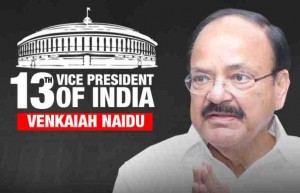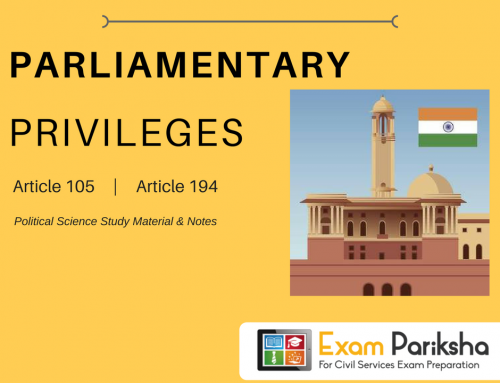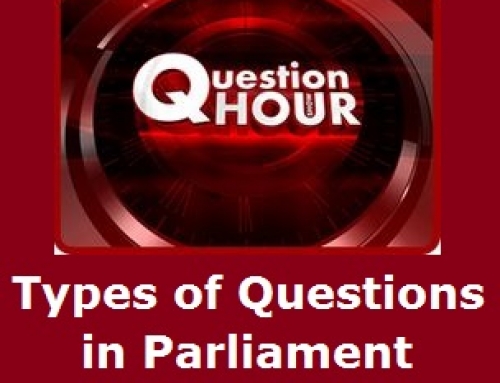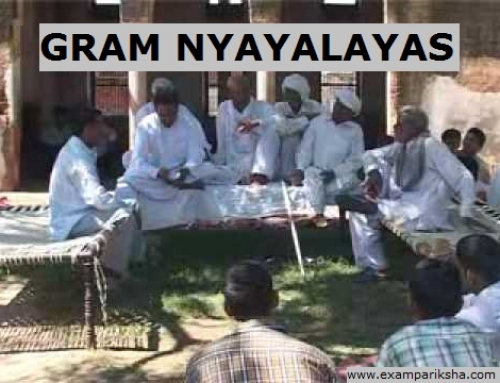The Constitution of India has provision for the office of the Vice-President. He occupies the second highest office in the country. This post has been based on lines of the American Vice President. He is given a rank next to the President of India in the official Warrant of precedence.

Who is the Vice President of India?
Presently, Shri M. Venkaiah Naidu graces the office of Vice President in India. He is the 13th Vice President of the country.
Venkaiah Naidu is the third vice-president from Andhra Pradesh. Previously, Sarvepalli Radhakrishnan and VV Giri have preceded him, both of whom later became President.
Election of Vice President of India
- Like the President, the Vice-President of India is elected indirectly by an electoral college consisting of elected and nominated members of both Houses of Parliament.
- His electoral college does not include members of state legislative assembly.
- It is done on the basis of proportional representation by means of single transferable vote system.
- The voting is held by secret ballot.
- The Vice-President cannot be a member of either Houses of Parliament, or of a State Legislature.
Qualifications of Vice-President of India
- He/she has to be a citizen of India, who should not be less than 35 years of age,
- He should not hold any office of profit
- He/she should be eligible to be elected as a member of the Rajya Sabha.
Term of Vice President of India
The Vice-President holds the office for five years. He/she can even resign from the office before the expiry of five years by writing to the President.
Removal of the Vice President
Though he/she cannot be impeached like the President. The Vice President can be removed before five years if a resolution to this effect is passed by a majority of members of Rajya Sabha and agreed to by the Lok Sabha.
Functions of the Vice-President
- The Vice-President is the ex-officio Chairman of Rajya Sabha which means that he/she presides over the Rajya Sabha and performs normal duties of a presiding officer.
- As the chairman he/she performs functions such as maintenance of order in the House, allowing members to speak and ask questions, and putting bills and motions to vote.
- The Vice-President is not a member of the Rajya Sabha, so he/she cannot vote in the House. But, in case of a tie, He/she exercises his/her casting vote so that a final decision can be reached.
- In case of a vacancy in the office of the President of India, either due to death, resignation or impeachment, the Vice-President officiates as the President (for not more than six months).
- During that duration, he enjoys all powers of the President and does not act as the Chairman of Rajya Sabha.
- He also temporarily discharges the functions f the President in case the President is temporarily unable to discharge his/her functions, without becoming officiating President.
Vacancy in Office:
A Vacancy in the office of Vice-President can occur in any of the following ways:
- On the expiry of this tenure (five years).
- By his resignation.
- On his removal by the houses of the Parliament.
- Upon his death.
- When he gets disqualified to hold office or
- When his election is declared void.
Emoluments and Salary of the Vice President of India
His/her salary as ex-officio chairman of Rajya Sabha is Rs 1.25 lakh per month. Additionally, he also gets a daily allowance, free furnished residence, medical, travel, and other facilities.
But, during his discharge of duties as the President, he gets emoluments and privileges of the President of India.
Pension
The Vice-President receives 50% of the salary as pension after retiring from the office.
We hope this overview about the Vice President of India was useful in elucidating the major highlights for exam purpose. Share your insights about this in the comments below.





